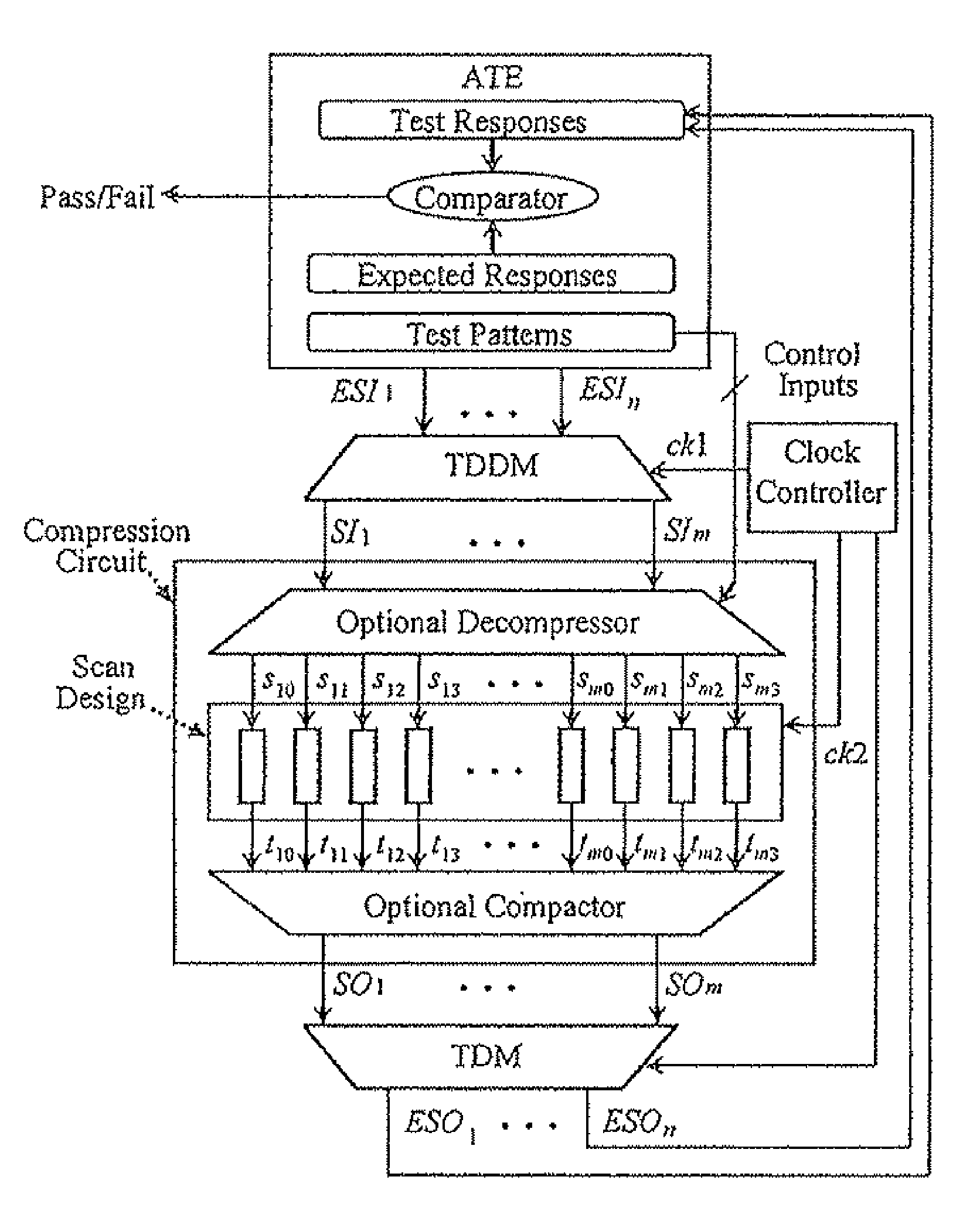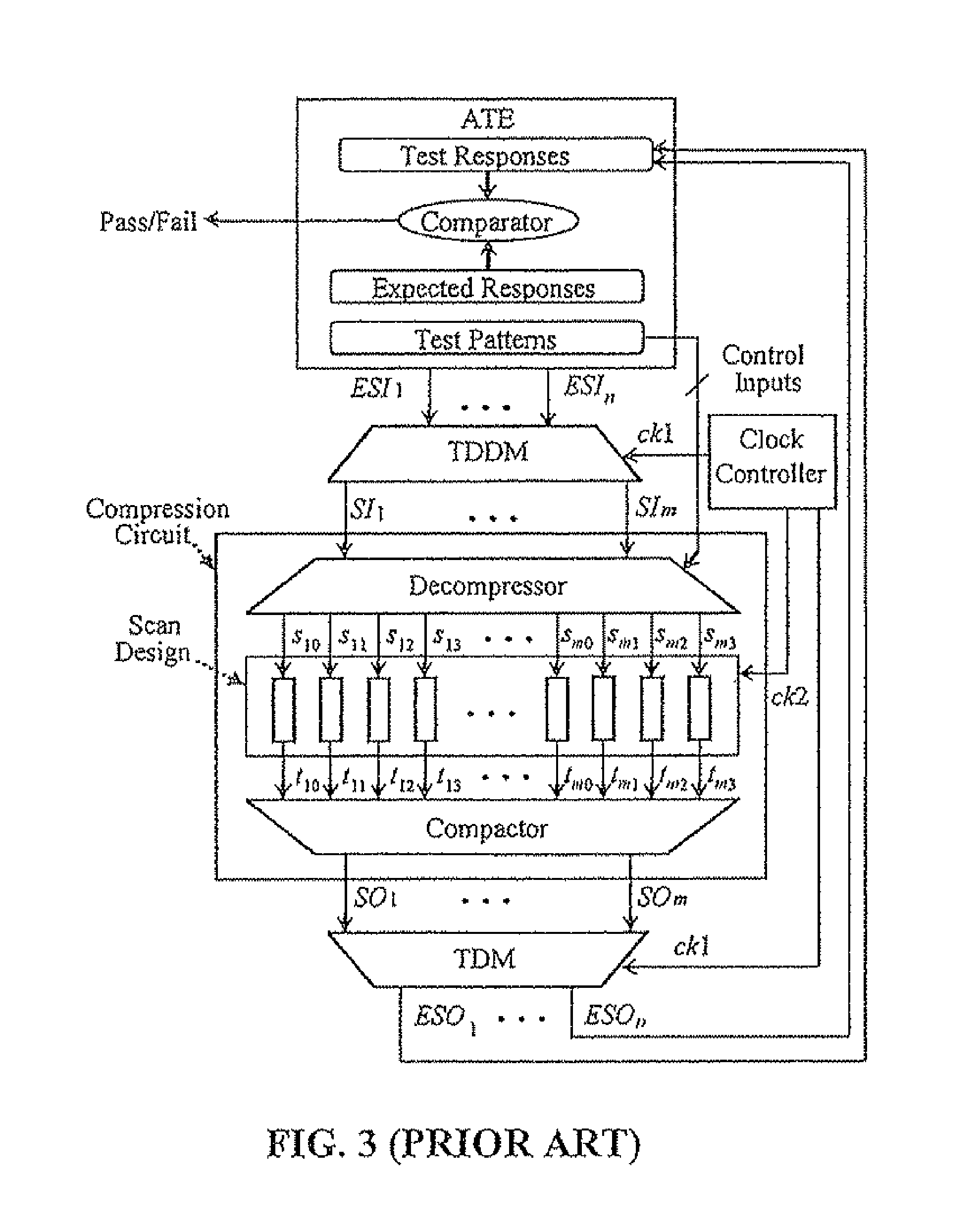Method and apparatus for testing 3D integrated circuits
a technology of integrated circuits and methods, applied in the field of scan-based design and testing, can solve the problems of increasing test cost, i/o pads not available to all dies (layers), and test data volume and test application time (that affect test cost) have increased dramatically, so as to reduce test cost and high data rate
- Summary
- Abstract
- Description
- Claims
- Application Information
AI Technical Summary
Benefits of technology
Problems solved by technology
Method used
Image
Examples
first embodiment
[0057]FIG. 7 shows a circuit diagram of the present invention for testing a 3DIC with 2 dies and 10 modules each. The first architecture includes a TDDM circuit 701 and a TDM circuit 702, both running at 20 MHz. In the architecture, a 1-to-1 dedicated bus 703 that transports test data in and out of a module on each die is not shared with other modules. The TDDM circuit couples a 1-bit register (flip-flop) to each module scan input, so a test pattern applied on the external scan input port can be latched in the register within the module. The TDM circuit includes a multiplexer which is coupled to all module scan chain outputs so the captured test response from one die can be shifted out to ATE for analysis one at a time.
second embodiment
[0058]FIG. 8 shows a circuit diagram of the present invention for testing a 3DIC. The second 3DIC test architecture includes a TDDM circuit 801 and a TDM circuit 802, both running at 200 MHz. Unlike Architecture 1, this architecture uses a 1-to-10 (or a 10-to-1) dedicated bus to transport test data in (or out of) a module on each die. This requires that each TDDM / TDM circuit is a high-speed 10-bit deserializer / serializer that operates at 200 MHz. With this architecture, the single scan chain can now be split into 10 balanced short scan channels, resulting in a 10× reduction in test application time.
third embodiment
[0059]FIG. 9 shows a circuit diagram of the present invention for testing a 3DIC. The third 3DIC test architecture includes a TDDM circuit 901 and a TDM circuit 902, both running at 200 MHz. Unlike Architectures 1 and 2, this architecture uses a 10-to-10 shared bus that transports test data in and out of all modules on each die in parallel. The TDDM circuit now couples a 10-bit register to the shared bus, so a 10-bit test pattern, instead of 1-bit as in Architecture 1, applied on the external scan input port can be latched in the register within the module one at a time. The TDM circuit includes a multiplexer which is coupled to all module scan chain outputs so the captured test response from one die can be shifted out to ATE for analysis one at a time. This will require operating the bus at 200 MHz to shift test data in and out of each module. With this architecture, the single scan chain can now also be split into 10 balanced short scan channels, resulting in a reduction of 10× in...
PUM
 Login to View More
Login to View More Abstract
Description
Claims
Application Information
 Login to View More
Login to View More - R&D
- Intellectual Property
- Life Sciences
- Materials
- Tech Scout
- Unparalleled Data Quality
- Higher Quality Content
- 60% Fewer Hallucinations
Browse by: Latest US Patents, China's latest patents, Technical Efficacy Thesaurus, Application Domain, Technology Topic, Popular Technical Reports.
© 2025 PatSnap. All rights reserved.Legal|Privacy policy|Modern Slavery Act Transparency Statement|Sitemap|About US| Contact US: help@patsnap.com



